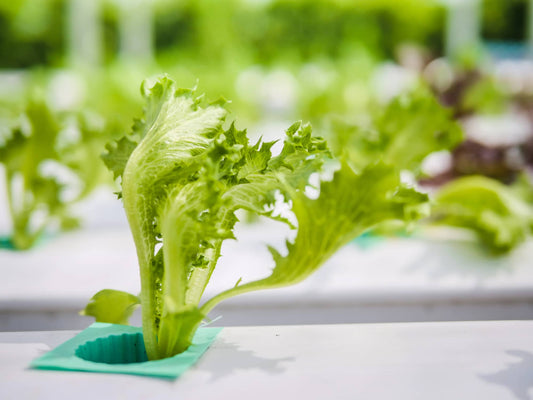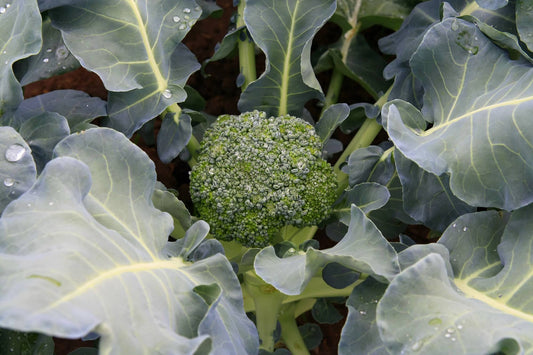Spinach is a nutritional powerhouse that thrives in hydroponic systems where controlled environments enhance its growth and quality. This cool-season leafy green is known for its rapid development, continuous harvests, and rich vitamin content. Hydroponic spinach can be cultivated year-round, making it a valuable addition to both home gardens and commercial farms. Whether used in salads, smoothies, or cooking, fresh hydroponically grown spinach provides a consistent supply of tender, nutrient-rich leaves. This guide outlines the essential aspects of successfully growing hydroponic spinach, from seeding to harvesting.
Health Benefits of Hydroponic Spinach
- Rich in Iron – Spinach is an excellent source of iron, which plays a vital role in oxygen transport and energy production, preventing fatigue and anemia.
- High in Vitamin A – Loaded with vitamin A, spinach supports healthy vision, immune function, and skin health.
- Antioxidant Powerhouse – Contains powerful antioxidants like lutein, zeaxanthin, and beta-carotene, which protect cells from oxidative stress and reduce disease risks.
- Supports Bone Health – High in vitamin K, spinach promotes bone mineralization and helps maintain strong bones while also benefiting cardiovascular health.
Growing Hydroponic Spinach: A Step-by-Step Guide
Spinach Growth Stages
- Germination – Takes about 7–14 days in optimal moisture and temperature conditions.
- Seedling to Mature Plant – Needs 4–6 weeks after germination to develop healthy foliage and root systems.
- Harvest – Begins after 4–6 weeks by picking outer leaves while allowing the plant to keep producing. When the plant begins to flower (bolt), the leaves turn bitter, indicating the end of its productive cycle.
Environmental Conditions for Maximum Yield
- Planting Season: Spinach prefers cooler temperatures, making it ideal for early spring, late fall, or winter growing. It can also be grown year-round indoors.
- Temperature: Maintain temperatures between 59°F to 70°F (15°C to 21°C) to prevent premature bolting and ensure steady leaf production.
- Humidity: Keep humidity at 50% to 70% to promote healthy growth and prevent fungal diseases.
- Light Requirements: Spinach requires 3–6 hours of direct sunlight daily. For indoor hydroponic systems, provide a DLI of 12–18 mol/m²/day using grow lights to prevent legginess and encourage dense foliage.
Essential Nutrient and pH Levels
Recommended EC Levels:
- Seedling Stage: Start with an EC of 1.8 mS/cm to support early root and leaf development.
- Mature Growth:Increase EC gradually to 2.3 mS/cm as plants mature, ensuring they receive sufficient nutrients.
pH Range:
- Maintain a pH between 6.0 and 6.5 for optimal nutrient absorption and overall plant health.
Key Practices for Thriving Hydroponic Spinach
Continuous Harvesting: Regularly harvesting outer leaves prolongs the lifespan of each plant and slows down bolting.
Preventing Bolting: Maintain cool temperatures, consistent moisture levels, and sufficient nutrients to minimize the risk of spinach bolting too soon.
Nutrient Management: Spinach heavily relies on nutrients, particularly in later growth stages. Ensure a continuous nutrient supply by frequently monitoring and adjusting the EC levels
Pest and Disease Control: Spinach is vulnerable to pests like aphids and diseases such as downy mildew. Promote proper airflow, inspect plants regularly, and employ organic treatments or preventative strategies.
Seed Production Considerations
Allow spinach plants to bolt and develop flower stalks for seed production. Once the flowers appear, let them mature until the seeds turn brown and dry. Harvest the seed stalks, dry them in a well-ventilated area, and store the seeds in a cool, dark place for future planting.
Popular Hydroponic Spinach Varieties
- Bloomsdale – A crinkled-leaf variety with a robust texture and high resistance to bolting.
- Savoy – Known for its dark green, curly leaves and exceptional cold tolerance.
- Flat-leaf– Smooth, tender leaves ideal for fresh salads and juicing.
- Oakleaf – A unique variety with oak-shaped leaves, offering a mild and sweet flavor.
- New Zealand – Heat-tolerant and drought-resistant, making it ideal for warmer climates.
- Malabar – A climbing spinach variety with thick, juicy leaves that thrive in humid environments.
Final Thoughts on Growing Hydroponic Spinach
Hydroponic spinach cultivation is an efficient and sustainable method for growing fresh, nutrient-dense greens year-round. By maintaining optimal temperature, humidity, and nutrient balance, growers can achieve a continuous harvest of tender, flavorful spinach. With proper care, hydroponic systems create an ideal environment for producing high-quality greens while eliminating challenges related to soil. Spinach remains a top choice for hydroponic enthusiasts looking to maximize their indoor or greenhouse garden yields.




